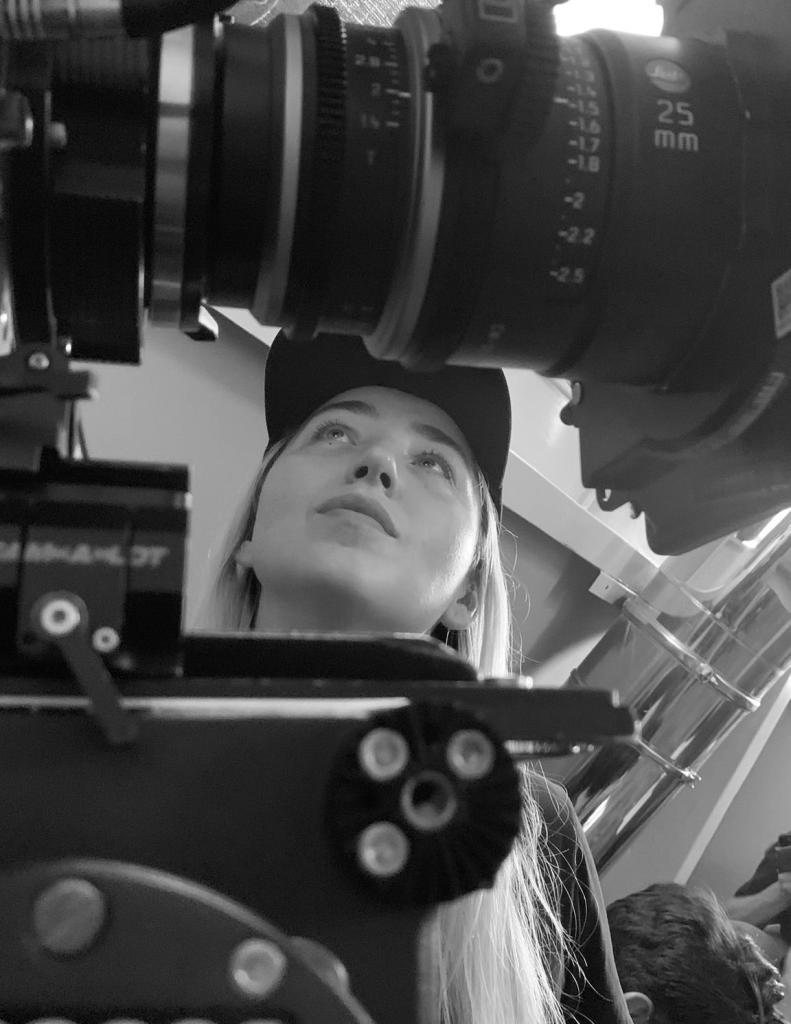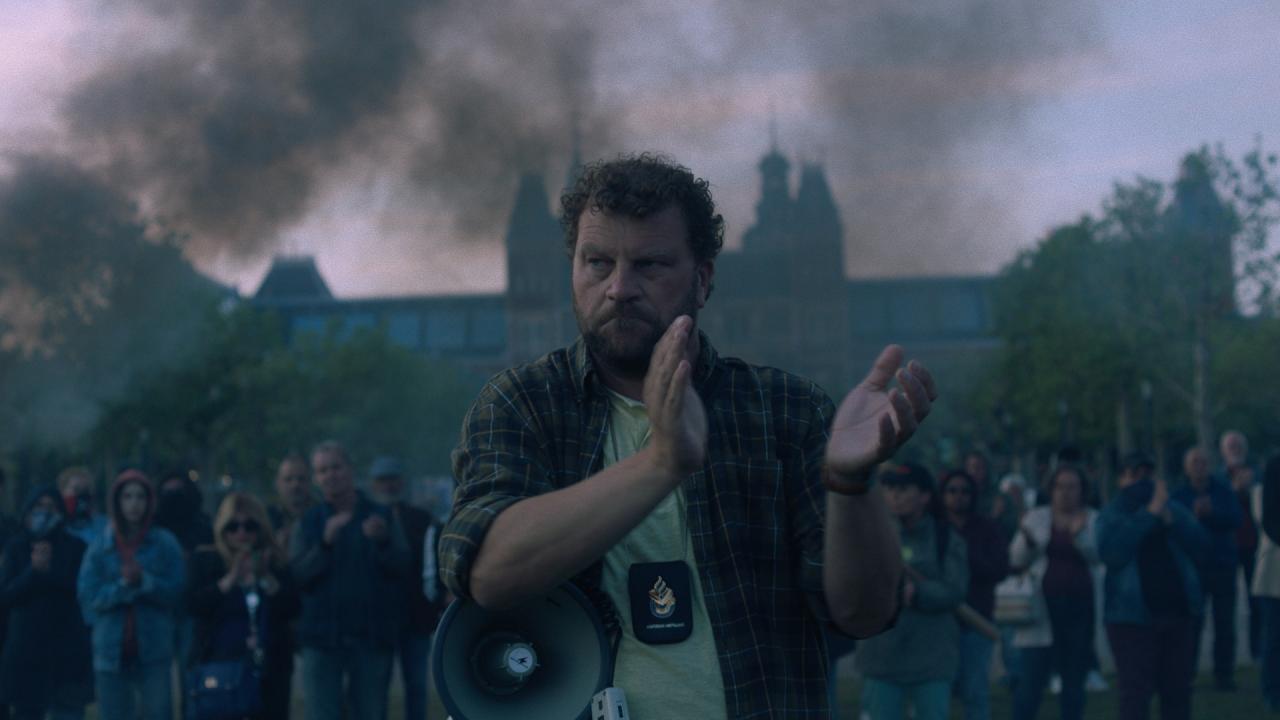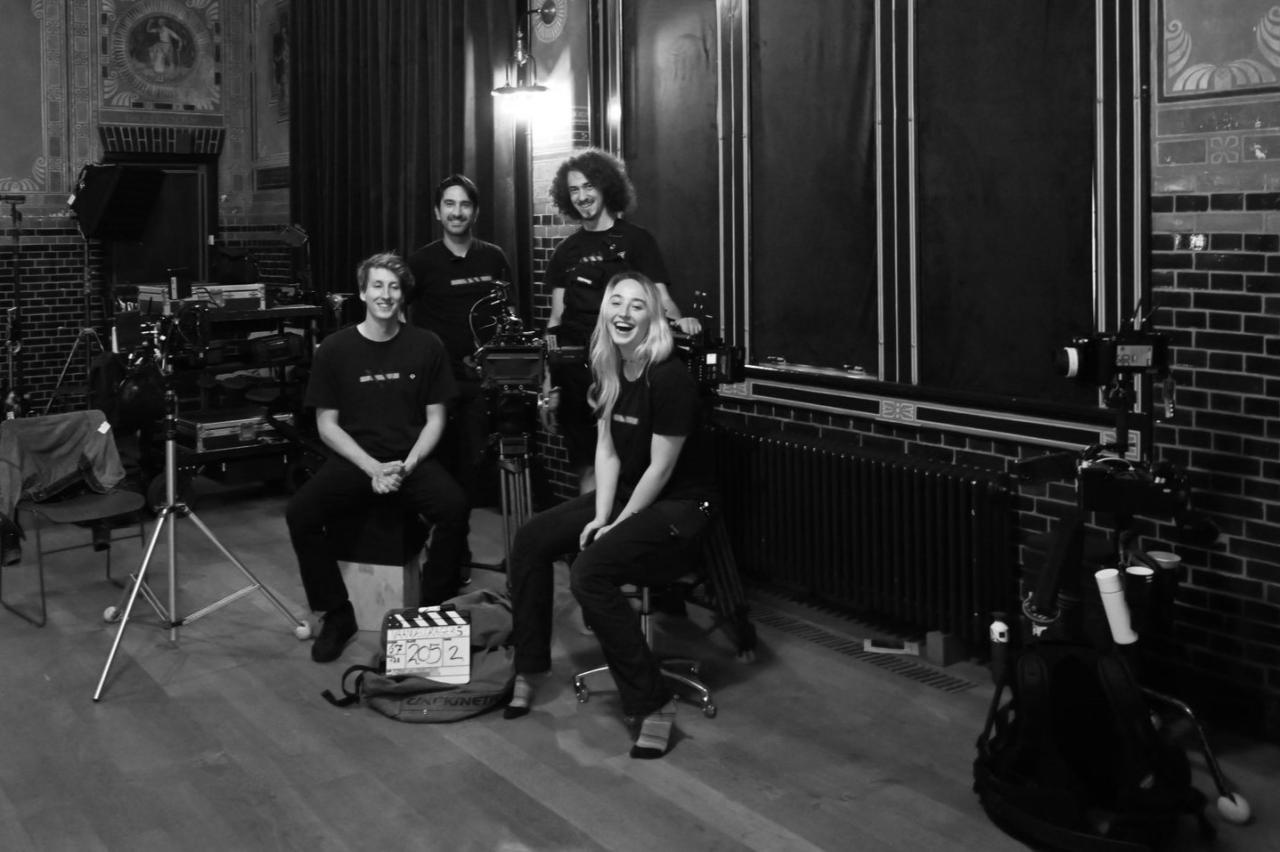Show all articles
Lola Mooij - Finding Magic in Real Life
Amsterdam, 2024-01-23 - Judith Boeschoten and Nina da Costa
It’s a cold winter day when we arrive at Lola Mooij’s front door. She invites us in, pours us hot tea, and lights a few candles to make her already warm apartment extra cozy for us. She was reading The Secret Garden, a children's book written in 1911, about finding magic in the mundane. For the next two hours, Lola describes how she brings her own projects to life, inspiring her crew to pour in that extra touch of magic, whatever genre they’re working in.
Lola was very young when she discovered her knack for photography. Aged 15, she went on a trip to Uganda with her mother, taking pictures everywhere they went. Being good with people and especially with kids, Lola was able to get very close to her subjects to capture their most natural and unguarded moments. The resulting photos went on to be used on billboards throughout the Netherlands. It was one of the experiences that made her decide to take a gap year after finishing high school.


She went to New York and took a course in film directing. But it irked her that when it came to visualizing her story, someone else was charged with picking up the camera and doing the shoot. Lola says it felt like someone else was blowing out her birthday candles. So after her second project as a director, she decided that from then on, she would be the one who operated the camera. Inspiration came from Steve Walker, a director of photography and good friend of her father’s, who sadly passed away a few years ago. Steve took the young Lola under his wing and made her realize that making films was a real job. She did a pre-course in lighting to learn more about the technical side of filmmaking before going on to graduate in Cinematography at the Dutch Film Academy in 2020.
Lola argues filmmaking is all about cooperation, not just with crew, but also with the cast or participants in a documentary. “It’s a brave decision to feature in a documentary, or to be an actor in a fiction film,” she says. “It’s necessary to make them feel safe and at ease. As a cinematographer that is a big part of my job. There has to be a relationship of trust, because I am partly responsible for how the world will see them.”
Lola says that when she’s shooting documentaries, she brings along a pocket-sized camera when she first meets the participants. She explains: “This way they can acquaint themselves with me being all over them. I’m not talking, just looking at them, shooting pictures. I can learn and feel how they react to me and the camera. I once told a director; ‘we should go home, I don’t think we should film today’, because I sensed a subtle resistance in our character's demeanor.”
Last summer, Lola shot her first feature, ‘De Vaandeldrager Vijf’, written and directed by Joost van Hezik, a film for television, produced by Hazazah. It’s a political satire about ‘De Vaandeldrager’, a painting by Rembrandt van Rijn. The movie is based on the true story of the Dutch government’s purchase of the painting in 2022. It paid 175 million euros at a time of big cuts in spending on arts and culture.The film tells the fictional story of five activists who break into the Rijksmuseum to steal the painting, effectively taking it hostage, as a way of forcing the government’s hand in the country’s real-life childcare benefit scandal, known as ‘de Toeslagenaffaire’.
The script was far more laborious than the Telefilm budget allowed. So the producer said: “Let's make this a 9 person run and gun shoot, I know who can do this: Lola Mooij”. Lola had a track record of doing impossible shoots, ones where production values did not stretch as far as the budget. In this case, Lola told the project’s executive producer, “I need at least 9 people for just the camera and light department, but I’ll see what I can do”.
Despite those constraints, Lola says she felt compelled to make this film. She liked the script and felt a strong affinity with paintings and art in general and in particular the Rijksmuseum. Most importantly, she believed the Dutch childcare benefit scandal deserved more attention, and she figured that comedy was a good way to reach a big audience.

Matching the film’s budget with Lola’s ambitions was a challenge. A lot of money was spent; on a replica of the painting, on expensive locations, and phone call scenes which required double shoots, not to mention many actors. They were fortunate to have only two main locations, but a new expensive scene was added; an uprising at Museum Plein at night. Joost insisted on the importance of this scene. Lola convinced him to shoot the scene in twilight because there was obviously not enough time and money to light the whole Museumplein at night. Nevertheless, it turned out to be an expensive scene to shoot, and as a result the budget only stretched to 14 (!) days of shooting. “It was a big scene with action and smoke bombs and a lot of noise,” Lola says. “I tried to make the scene look beautiful and rich, but we didn’t have enough extras.” Lola laughs as she remembers someone asking her, “Hey Lola don’t you have a lot of cool friends who can riot?” “Yeah I’ve got cool friends!”, she replied. “Luckily they showed up.” In the end, that scene became the most enjoyable scene to shoot, because it was a big action scene at a great location with a lot of people. She remembers standing there looking at the buzz, thinking, “I’m actually making an awesome movie!”

The production wanted to keep the crew small but that was difficult with such a big production in such a limited timeframe. Lola knew the only way to make this possible was to shoot with a B-Camera, and with an operator she could rely on. She called in her friend and cameraman Jaap Mar Diemel. They had worked together before and she knew she could trust him completely. Joost wanted to shoot handheld style, something he had never done before but that she loved doing because of her background in documentary films. As a result, they agreed to shoot everything handheld with two cameras.
For this film, she had to work closely with her gaffer, Giel Born, and the production designer, Donja de Graaf. She believes working closely with these two departments is key, as they are the ones who create the look, the atmosphere and feel of the film. The location was beautiful, but they had to make it feel more claustrophobic. That was a tough decision for Lola. “My heart ached when the art department put the big plates in front of the windows, because the windows provided beautiful natural lighting that worked really well for the location,” she says. But it had to feel more uncomfortable and Lola decided to blackout the windows and create a grid with lighting in the ceiling and some movable fixtures on the floor that allowed for an atmosphere of unease, and consequently gave her total control of the room. Together with Donja, she shaped the feel she wanted with the colors and construction of the set. “Sometimes you have to compromise on aesthetics and make decisions you might not want but have to make in order to be true to the story and idea” she says. Together with her grader, Chris Wouda, she made a LUT, which emphasizes the feel of the film.

For this film she worked with Alexa Mini cameras but used different lenses than the ones she usually works with. She loves old Cooke lenses, as they are a bit softer, especially at the edges. Initially she wanted to use them, but for this film they didn’t work. A lot of shots contained many actors and they had to be in focus, even when they were at the edges of the frame. She needed to have a large range of focal lengths, which she found in the Arri Ultraprime set. After extensive testing, she decided to soften them a bit with Pro-mist filters. She considers herself lucky, because with the current budgets, it’s not self-evident to do camera tests. Sometimes producers don’t see the necessity to do costume and make-up tests but she convinced them and luckily they agreed. “It’s so important that you create a look and vibe together with the director before you begin shooting,” she says. They ended up testing the cameras, lenses, filters, background colors, make-up, costume, actors, and of course the painting, so that she and Joost could create the perfect look.
The whole project was a big challenge, especially timewise. Sometimes they decided to use fewer shots. For example, there was a scene which Lola had originally planned to do in one shot but in the planning it became four shots to save time. Then, because there was actually no time left to shoot the scene, they did it in one shot after all. In Lola's experience, such last-minute decisions often don’t work, as it takes more time creating one complex shot instead of several simple ones. However, this time it worked very well; with her intuitive camera movements and the actors in total concentration, it became one of the film’s more dynamic scenes, one that prompts a shift in the plot.
Sometimes Lola had to let go of all the shotlists and lighting plans which she made and shared with her director, AD, and camera crew. Sometimes the circumstances called for other measures. Luckily, Lola has no problem adapting, it comes to her as easily as breathing thanks to her experience with documentaries. She also enjoys mixing different camera styles in the same film. For instance, for the hospital scene, she shot very close and intuitively on the subject, as opposed to the rest of the film. Within the entirety of the film, it serves the plot quite well dramatically, because the film required something different at that point.

Lola wants people to be at ease. She finds it important that the crew trusts her and can tell her everything. “You make a film together, so you have to be kind to each other.” she says. “If you treat your colleagues right, you get things done. It pays to make people want to work for you. I don't like to scream and shout on the set.” For example, working with two cameras at the same time is a challenge for sound. “I had a bond with the sound department,” she says, laughing out loud. “I just looked them sweetly in the eye, and practically begged… No I’m kidding, we always communicated about the shots, what was possible for them and necessary for me. I can easily make decisions in favor of the story and let go of my own creative needs. You need to pick your battles, and you have to know what is important and what’s not.”
Lola’s energy and passion were obvious throughout our interview. Her vivid imagination helps her with another of her recent projects, a documentary directed by Milou Gevers called ‘Spijtmoeders’. There’s a lot of stop motion animation in it for which she has to work closely with the director and animator. She loves that stop motion allows her to play around with the lighting and camera on her own. To work with all kinds of little mirrors and creating little spots of lights everywhere makes her happy. The fictive animation gives the film a little magic. “I love to do documentaries but I also love to make more fiction, I need that change once in a while”, Lola says.
Lola loves escapism, genre and period movies. For inspiration, she reads books or watches films that are far removed from her own world. She points at the small burst of sunlight that reaches her room. “I could look at things like this for hours on end,” she says. However, the things she likes to watch are not necessarily the things she makes. She argues that filmmakers have a responsibility to shine a spotlight on important issues. “I want to visualize stories with a certain urgency and social awareness, but also in realism there can be touches of magic,” she says. Unfortunately, she doesn't find many films with ‘weird sparks’ here in the Netherlands, and she would like to see more of those. That said, she thinks there seems to be some growth in this area. “In my opinion, if we want to have more daring films we just have to educate the public,” she says.
Magic hour has passed, teapots have been emptied. We’ve been chatting for three hours. Lola has enlightened us with her positive energy, creativity and ‘can-do’ attitude. We believe very few could have done what Lola did for the ‘Vaandeldrager Vijf’. It’s a film that touches on a very serious matter while simultaneously maintaining great entertainment value, enchanting us with its ‘larger- than-life’ style and a cheeky sense of humor. Sounds like someone we know...
De Vaandeldrager Vijf will premiere on the 25th of January on NPO3 at 20:25.

